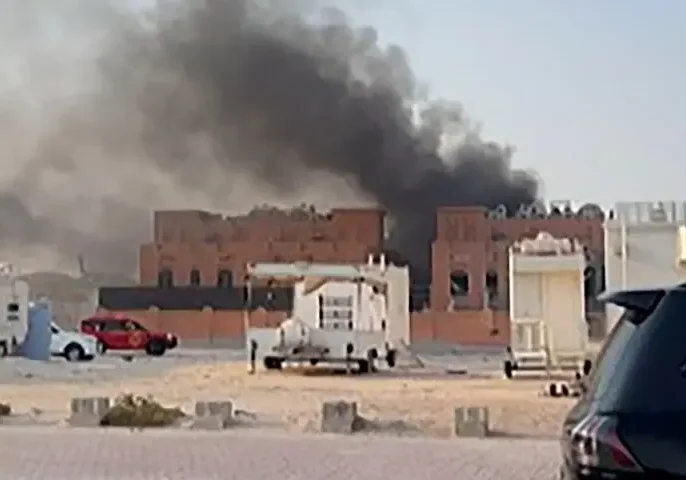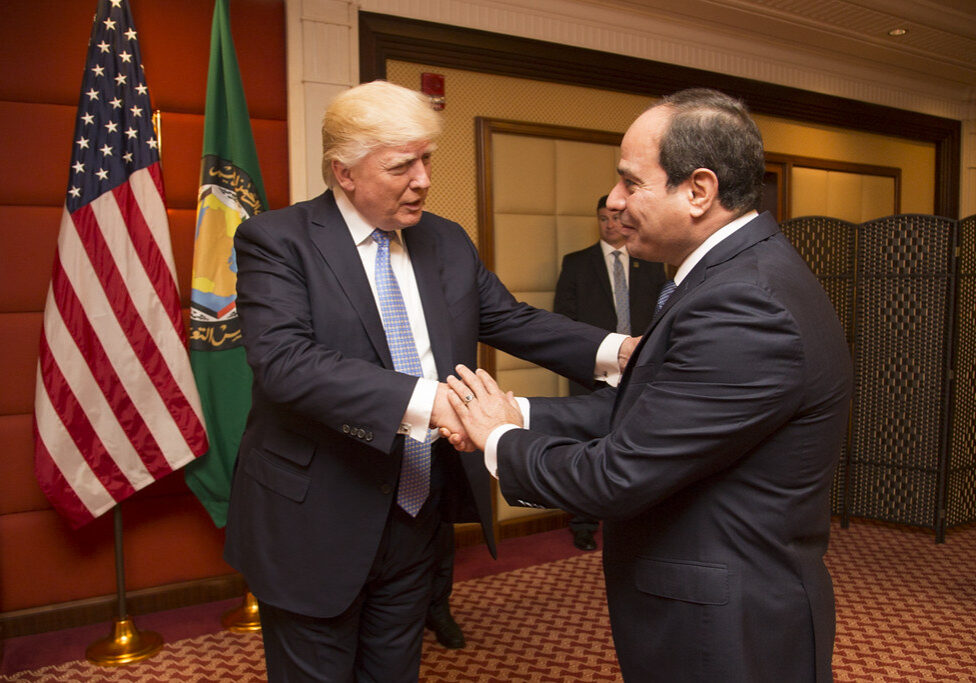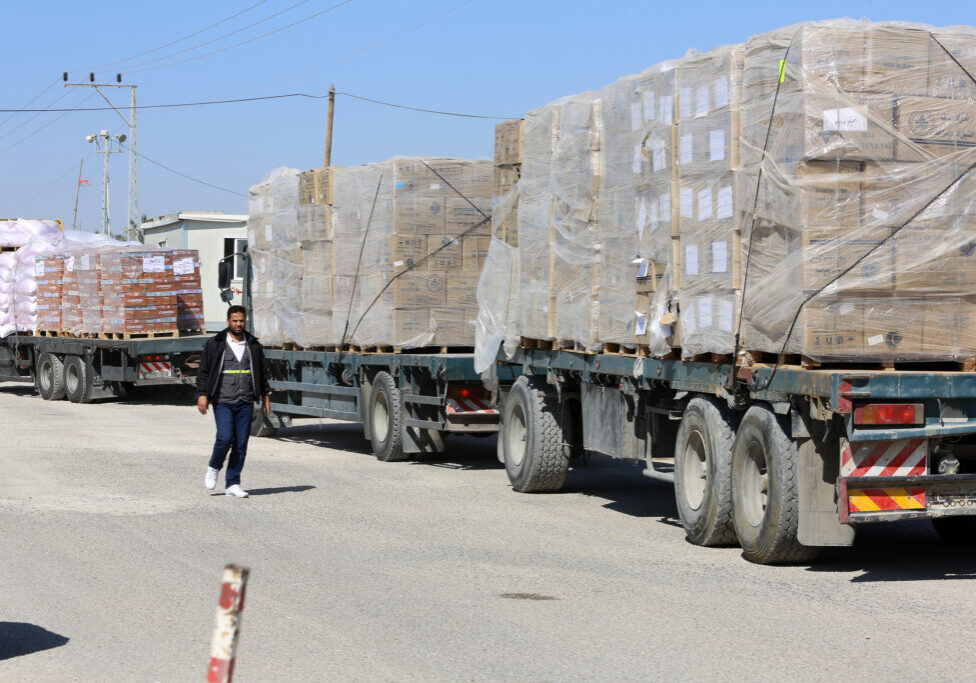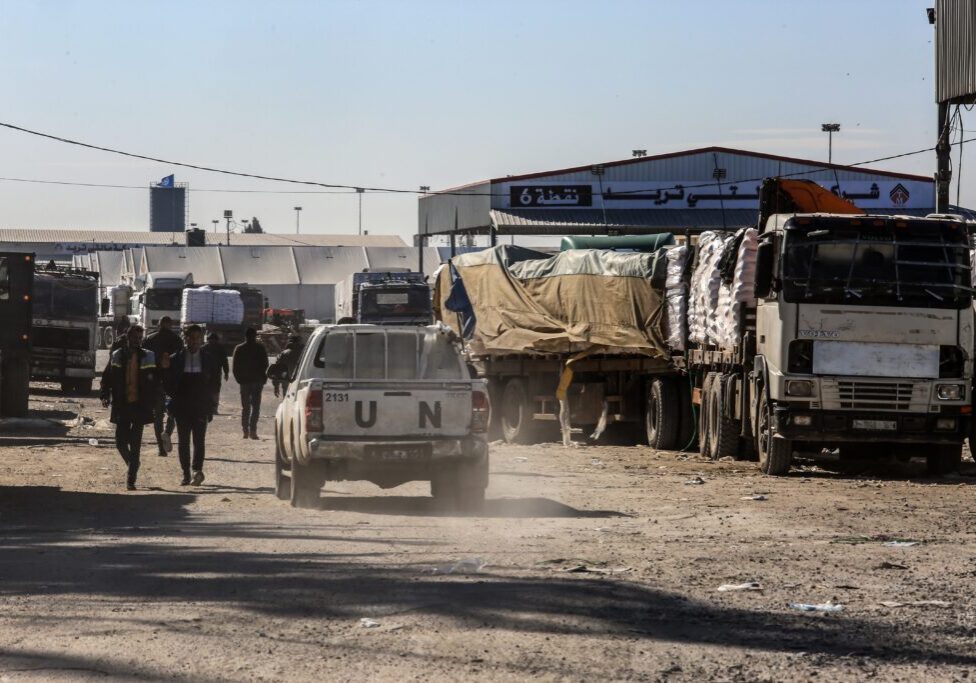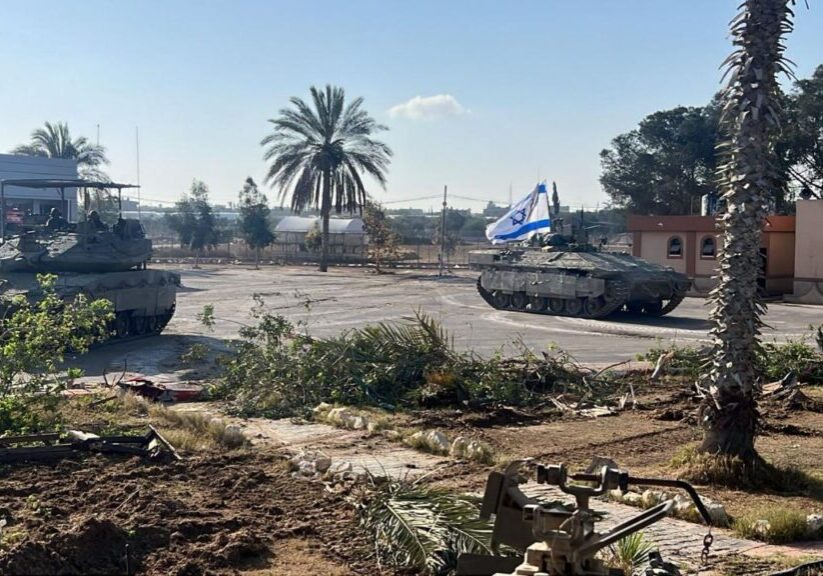Australia/Israel Review
Essay: In Retrospect
Mar 27, 2012 | Amos Yadlin
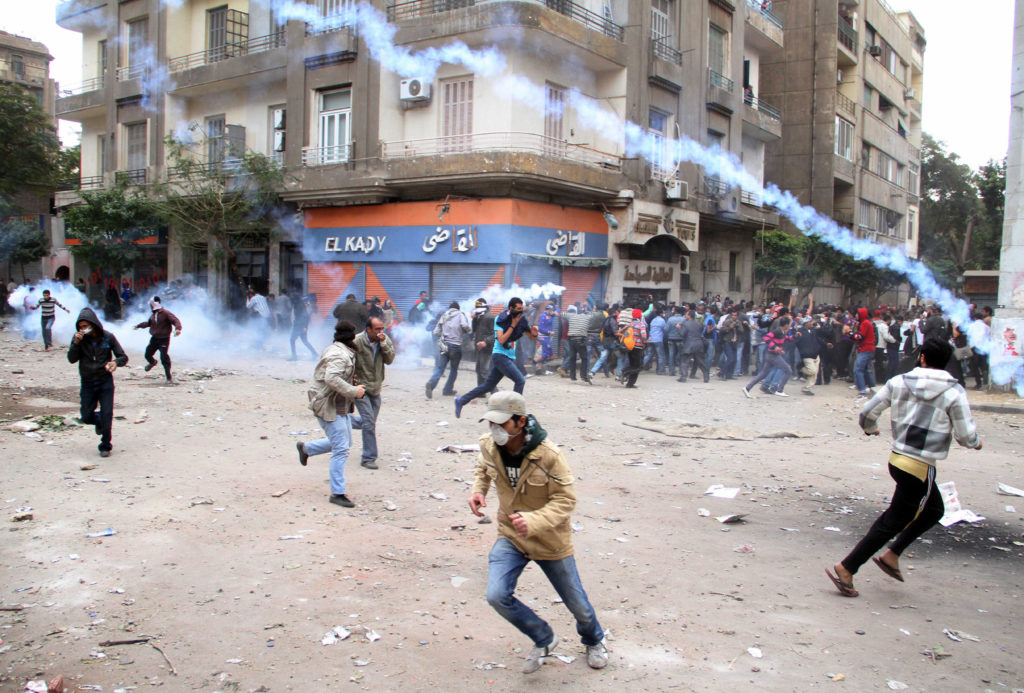
The Arab uprisings, one year on
Amos Yadlin
Since the outbreak of the protests in Tahrir Square, which were led by liberal, secular youth and which led to the ouster of Egyptian President Husni Mubarak, a lot of water has flowed through the Nile. An ailing Mubarak is on trial, possibly for his life, and his declaration that only his regime could block the rise of the Islamists turns out to have been keen and precise. Islamist political parties – the Muslim Brotherhood and the Salafists – won 75% of the vote in free, fair elections, while the liberal secular youth have been sidelined in terms of political influence in Egypt. The army, which has not given up the reins of government for even a moment, has teamed up with the Islamists, makes concessions in every confrontation with “the street”, and retreats further and further from what it declared was its first priority: to promulgate a constitution that would ensure basic rights and a stable democracy.
The spirit of Tahrir has changed. What started as an “Arab Spring” has ended as an “Islamic Year”, and this is just the beginning. Today, we understand that the phrase “Arab Spring” does not properly describe the phenomenon that shook the Middle East in 2011. We are not witness to the flowering of a revolution leading to a liberal, secular, West European-American model of democracy. We are not seeing nonviolent change, and we are not observing a rapid “domino effect”, such as we saw in Eastern Europe. We are seeing a phenomenon that is changing and will continue to change the entire Middle East. A year after the start of the process, and looking ahead to the next few years, it is possible to propose ten insights about the Arab uprising, or intifada, which is probably a better term to describe the chain of revolts in the Arab world.
1. How significant is it?
In 2011, the Middle East entered a process that heralds change of historic proportions, equal in importance to the Arab awakening at the end of the nineteenth century that resulted in the creation of Arab (not Muslim) nation states after World War I and the demarcation of the borders by France and Great Britain, or to the changes in the middle of the last century, when the Arabs finally expelled imperialism, replaced many of the royal houses, and tried to realise a pan-Arab vision incorporating socialism as espoused by Gamal Abd al-Nasser and the Baath party.
2. Why did the revolt happen now rather than a decade or two ago?
All the conditions for revolt have been in place for many years. During the 1980s and 1990s, dictatorships were ousted on other continents and in other regions around the world: Eastern Europe, South America, and East Asia. The world saw change in many totalitarian states, a transition to more democratic regimes, economic growth, and technological advances. The question is usually: why did the Arabs not undergo a similar process? In 2002, the Arab Human Development Report indicated three main lacunae constituting significant barriers to growth and change in the Arab world: freedom, knowledge, and the status of women. With respect to knowledge, the report talked about the technological backwardness of the Arab world: internet penetration stood at less than 1%. The decade since then brought about a dramatic change in terms of technology: the internet, satellite stations, and the social networks brought the middle class the knowledge that there are other ways to live, and that they deserve more – more freedom, more democracy, more human rights, progress for women, employment, and release from the grip of tyrants. The Arab revolt of 2011 has been nicknamed “the Facebook revolution,” with good reason.
But the power of al-Jazeera and Facebook has their own limitations. As the Arab world trades in its Arab identity (that can accommodate different religions) for an Islamic one as its determining feature, questions arise that are as yet unanswered. How will Islamism deal with progress and the desire for freedom carried on the waves of the internet? Will Islamism be able to put back into the bottle the notion that “the people is the sovereign” and that it has an important voice in shaping the nation? Will the next elections in Egypt be as free and fair as the elections immediately after the revolt?
These are key questions for the future of the Arab awakening.
3. A revolution without leadership and ideology?
The Arab awakening is a leaderless revolution. We find it difficult to come up with the names of the leaders of the revolt. There is no charismatic figure, such as Lenin or Khomeini, leading the revolution. The revolts in Tunisia, Libya, Syria, Yemen and Egypt all broke out without a clear ideology. It was only once the Muslim Brotherhood and the Salafists came onto the scene and hijacked the revolts that they started to take on an ideological coloration – that of political Islam. In all those states in which the first phase of the revolution is over, as well as in those where the fighting is still ongoing, there is reluctance to name the source of political authority: is it the people, which finally has a voice, or God and His prophet?
What ideology will lead the social and economic change? In the 1950s it seemed that socialism was the right model for the Arabs to adopt, whereas in the 1990s it was capitalism, free enterprise, privatisation and openness to the world that were supposed to have been the engine of growth. What is the economic philosophy that is now supposed to extricate Egypt from its chronic economic crisis: planned socialism for a non-functional state or capitalism that is going to exacerbate the inequality, poverty, and rage of the masses?
4. No domino effect
The scent of jasmine did indeed spread from Tunisia to the entire Arab world by means of mass communication. Still, every state in the Arab world is a unique ethnic, religious, social and economic mosaic, with its own political tradition and particular history. There are two vectors of influence in every state. One is a lateral process: amongst similar states of tyranny, the desire for freedom spreads at the speed of light to large audiences thanks to new technology. There are also in-depth processes different in every state, relating to ethnic groups, religions, rich and poor, history, legitimacy.
The relative weight of the lateral pan-Arab processes and the local features will determine the directions in which the revolutions will develop. At the end of the first year of upheavals in 22 Arab nations, only six experienced an actual revolution, and it did not even succeed in all of them. In Tunisia and Libya, the rulers and regimes have changed; in Egypt and Yemen, the rulers have changed but the regime has not; and in Syria and Bahrain the rulers and the regimes are still in power despite the riots, protests and characteristics of civil war.
5. What is preventing a domino effect?
It is important to understand that, contrary to the optimism and naïveté that assumed that the might of the social networks and the masses activated through them cannot be stopped, the Middle East has its own social networks vastly stronger than Facebook or al-Jazeera. The social network of the mosques, where the masses worship five times a day and the Muslim Brotherhood’s welfare, education, and assistance network, dawa, supports the needs of the poor, is what really decided the elections in Egypt and Tunisia. There is old but powerful “hardware” that is much stronger than modern “software”. Saudi Arabia, which led the counter-revolution, used the financial resources it accumulated when oil prices were high: free education, free healthcare, cheap housing, and 13- and 14-month salaries, at a total cost of US$135 billion, did the trick in quelling the unrest. In Syria, it is bullets that so far have stopped and are stopping the awakening from toppling the regime, whereas in Bahrain it was the combination of money and the willingness to shoot that stopped the domino from falling.
It is important to distinguish between two groups of states that have not joined the wave of change and revolution, and together are the absolute majority of the Arab world. The first is the group of kingdoms and emirates. Some have a lot of oil and the financial resources to stop the upheavals, but states without abundant natural resources, such as Morocco and Jordan, have also dealt rather well with the Arab awakening. It would seem that a high degree of legitimacy within the public, better management of expectations, better dialogue with the public, and implementing reforms in time stopped the “Arab Spring” at the gates of a group that, historically, has been more susceptible to unrest. The other group is that of the “been there, done that” states, those that have undergone civil war, revolts and political unrest in the last twenty years. The cost is well known to the citizens of these states: reciprocal killings, the destruction of institutions and state infrastructures, brutal terrorism, and damage to the economy and social fabric. Thus, Iraqis, Algerians, the Lebanese, and even Palestinians are not in a rush to return to the uncertainty and insecurity characteristic of eras of change and revolution.
6. Who are the biggest winners and losers?
It is probably too soon to name winners and losers, because the situation is still fluid, developing into different and contradictory directions, primarily because most of the process still lies ahead. Moreover, most of the regional players see a mixed picture. Nonetheless, one can point to some preliminary results.
The biggest winner of the past year is political Islam – in Tunisia, Libya, Egypt and (perhaps soon) in Syria. It seems that the rise of the Shi’ites in the Middle East has been curbed and that the Sunnis are the big winners of the Arab awakening. Turkey is also seen as a winner, even though it has paid a political price for hesitating over Libya, has lost economic investments worth billions in Libya and Syria, and is itself facing significant challenges because of the drawn-out repression in Syria and the Kurdish revolt at home.
The certain losers are the rulers who were toppled, the tens of thousands killed in Libya, the thousands killed in Syria, the economic and social systems in each of the six that experienced revolts, the women who had expected equality and instead got inferior status in the Islamist regimes, and the Christian minorities who formerly were equal partners in Arab nation-states and now find themselves inferior and even threatened in Muslim states.
The Americans also emerge as losers. They lost important allies in Egypt and Tunisia, their Saudi and Israeli allies find it hard to forgive them for abandoning Mubarak, and the instability in Libya and Yemen could strengthen al-Qaeda. Nonetheless, paradoxically, former President Bush’s vision of regime change in the Middle East and progress toward democracy seems closer to realisation than ever before, even if it is happening as the result of internal rather than external processes. Israel also appears to be on the losing side, though worse situations may yet lie ahead: a new regime in Egypt and perhaps a change in Jordan, chaos in Syria, and the latter’s attempt to export its problems, disappointments and unfulfilled expectations across the border.
The Iranians at first seemed pleased with the immediate results of the “Arab Spring” – the fall of pro-Western regimes allied with Israel, the strengthening of Islamist elements in the Maghreb and Egypt, the awakening of the Shi’ites in Bahrain, and the rising cost of oil. But now, as the Spring is over, it turns out that Syria, Iran’s major ally in the Arab world, is badly affected by the process, the Saudis and the Sunnis are gaining in strength, and the awakening could reach Teheran too, so that the strategic balance seems quite different than before.
7. Syria is the only place where the first round of the Arab awakening has not yet been decided
As 2011 turned into 2012, Syria remains the only state in which the first round of the awakening has yet to be settled. The combination of a strong, brutal regime with a weak opposition lacking organisational infrastructures places Syria in the position of an asymmetric civil war in which neither side can win, so far. The Syrian regime enjoys two advantages neither Mubarak nor Gaddafi had: a loyal army willing to shoot civilians and Russian protection against international intervention. The Syrian opposition relies on the mass dissatisfaction of those who suffered through years of drought and price increases, corruption, and reserved Sunni-Islamist resentment of Alawi minority rule.
Despite their weakness, the masses are impressive in their willingness to continue to protest, notwithstanding the heavy price they are paying. The public’s loss of fear of the regime in Egypt, where the army announced it would not harm demonstrators, was the key to toppling Mubarak. The loss of fear in Syria, where the army is shooting civilians, is thus worthy of much greater respect and sets Syria apart from Iran or Bahrain, where the regimes have restored the fear factor and stopped the demonstrations.
Syria is a majority Sunni state in the Arab world that for geopolitical reasons found itself in the Iranian/Shi’ite camp, an ally of Iran and Hezbollah. It was interesting to see the initial hesitation of the Saudis (and al-Jazeera) in deciding whether to support the regime – in its fight against the forces of change in key Sunni Arab societies that had developed relationships with Iran and Hezbollah – or to support the opposition. This hesitation is now over, and the Arab League, led by Saudi Arabia and the Gulf states, has joined Turkey in the effort to change the Syrian regime.
What is happening in Syria entails risks and opportunities for Israel. If a future Syria removes itself from the radical axis, that will spell a very positive change for Israel. For many years, the Israeli defence establishment recommended reaching an agreement with Syria, even at a steep territorial cost, in order to drive a wedge between Syria and Iran and end Syria’s support for Hezbollah and Hamas. Now, if the regime falls, this positive process could occur without Israel’s involvement and without the need to make difficult territorial concessions.
What does the future hold? Where is the Arab awakening going?
Any prediction about the future of the Arab awakening demands a great deal of caution. Changes are occurring in student dorms, factory dining halls, marketplaces, and mosques. The impact of modern technology is difficult to measure or quantify. Nonetheless, given what has already happened in the past year, one may point to four central parameters that will affect future developments:
- The army’s loyalty to the regime and its willingness to use force to oppose change.
- The support of the religious establishments for the regime or their opposition to it.
- The willingness of the international community to intervene against the existing regimes.
- The economy. The economic issue is highly significant and its long-term effect is critical. Almost every Arab state must register enough economic growth to ensure employment for the young joining the workforce. The Arab awakening has choked off growth. Egypt and Syria are both suffering from the same economic regression: tourism has stopped, investments from abroad have dried up, public spending has grown with increased subsidies, and foreign currency reserves are dwindling. Today, Egypt’s economy is significantly worse off than it was a year ago, while at the same time there are about one million new mouths to feed.
Transitional challenges versus completing a structured transformation
Even after the ouster of their rulers, states such as Egypt, Libya, Tunisia, and soon Syria face two types of challenges – transition and transformation.
In the transition phase it is necessary to formulate a constitution, establish institutions, and ensure balances in the young democracies. It is necessary to complete the difficult process of transferring rule, in Egypt with respect to the army, and in Libya, where it is necessary to build democratic institutions and a coherent army. It is necessary to ensure law and order, which were undermined during the riots and demonstrations. In Egypt, the police and internal security services are hardly functional. Above all, it is necessary to stabilise the economy and make it grow again.
In the long term the Arab world should complete an historical transformation. In the face of the argument that Islamic culture will ultimately prevent such a transformation and in light of its structural, religious, and economic problems, the Arab world is going to have to prove that it is no different from other world cultures and that a free, democratic society that respects human rights is possible in it, too. In all of human history, profound change of this sort has never taken place in the course of just a couple of years, and we are only at the start of a process that will take a long time, even if modern means of communication and technology can accelerate it greatly.
Ratcheting up the awakening to another level in 2012?
Until the Arab Spring comes to two leading powers in the Middle East – Sunni Saudi Arabia and Shi’ite Iran – its effect will be important but limited. Saudi Arabia remains an unpredictable enigma. At this point it is handling the winds of change in the Arab world quite well. However, if change occurs there, it will be of an entirely different magnitude compared to Libya and even Egypt. The sites holy to Islam and the oil wells in the eastern part of the Kingdom together create the potential for a crisis that could rock the entire world.
In the winter of 2012, we are now asking if politics and accountability will change the Islamists or if the Islamists will change the way political processes are conducted in the Arab world. Will accountability lead to moderation and pragmatism, or will radical political Islam draw the Arab world onto more problematic courses than those pursued by the regimes it is now replacing?
And finally, despite all the risks of the “Arab Spring” turning into an “Islamic winter”, if it were possible to ensure that the winds of change in the Arab world, which may have started to blow for the first time in 2009 in Teheran, would continue blowing eastward so that the “Jasmine and Lotus Revolutions” come to Iran, that would be the most positive strategic change for the entire Middle East.
Major General (ret.) Amos Yadlin is Director of Tel Aviv University’s Institute for National Security Studies (INSS). Previously, he served for more than 40 years in the Israel Defence Forces, ten of then as a member of the IDF General Staff. From 2006-2010, Gen. Yadlin served as the IDF’s chief of Defence Intelligence. © INSS, reprinted by permission, all rights reserved.
Tags: Egypt

